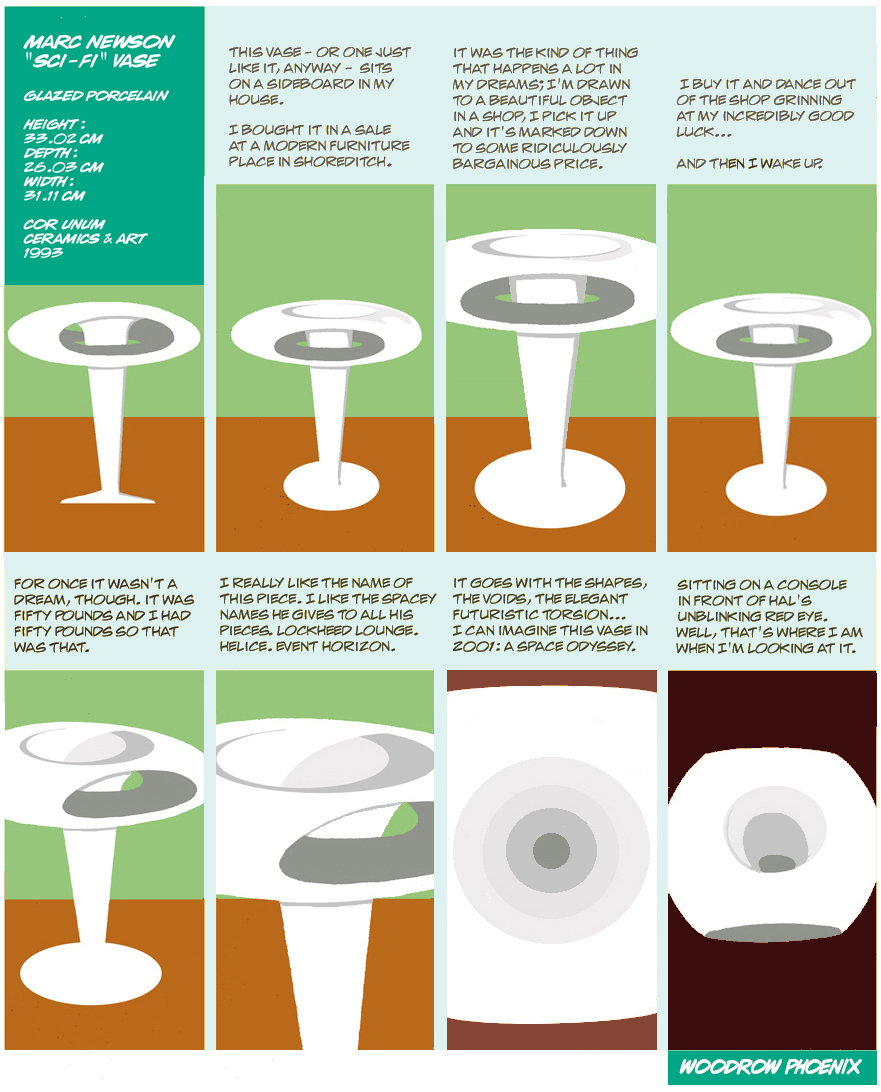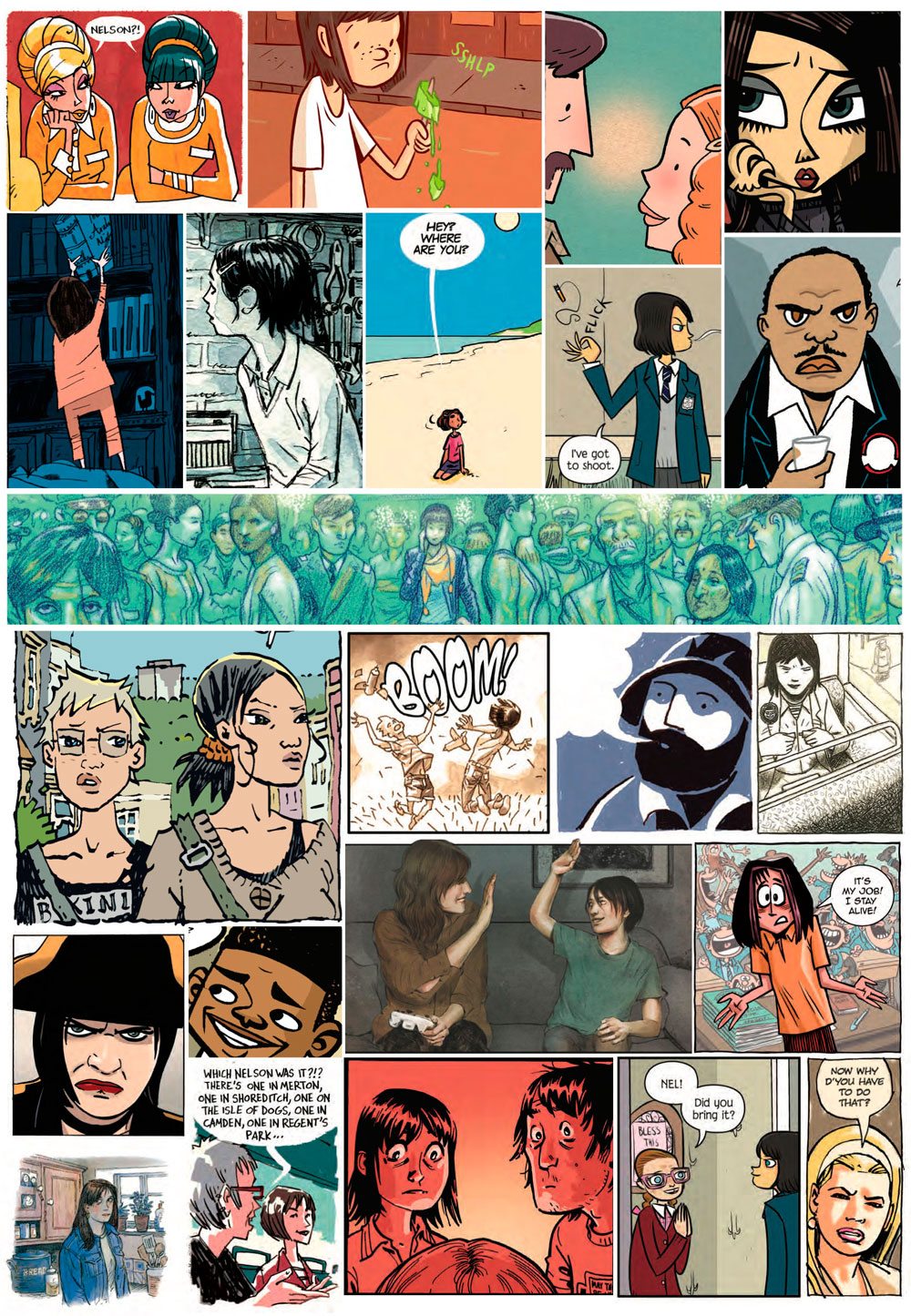Graphic Novel Production
Writers only have to be good at one thing: putting words on a page. Artists only have to be good at one thing: making pictures. Comics creators have to be good at both those things together and a lot of others besides. There’s an incredible amount of decision-making that goes into arranging all the elements of a comic strip in the optimum combination to deliver an experience readers can understand and enjoy. It’s a hard thing to do by yourself. So that’s where editors and book designers come in.
 Sci-Fi Vase. “Object” series, 2017.
Sci-Fi Vase. “Object” series, 2017. Editing and design are closely linked in comics because structural decisions are visual ones too. Seemingly very small choices such as the size and shape of panels, the style of lettering, how balloons are arranged and even the placement of art onto the page will change how you read a strip. So working with story is only part of what makes an effective graphic novel. When I edit a book I’m also thinking about the visual logic of a narrative sequence. This is particularly crucial with an anthology like Nelson, or The Golden Thread Project where different drawing styles have to sit next to each other.

Panels from 23 of 52 Nelson artists.
How comics display their information is closely linked to design. And designing group projects like Mental Health for Creative Freelancers, or graphic novels such as Watching or The Book of Sarah tends to slide into looking at the content too. There is far too much to say about editing than you want to read here, but if you have a complex project that needs an editor–or a designer–to make it look like it just came together all by itself, I can help you with that.